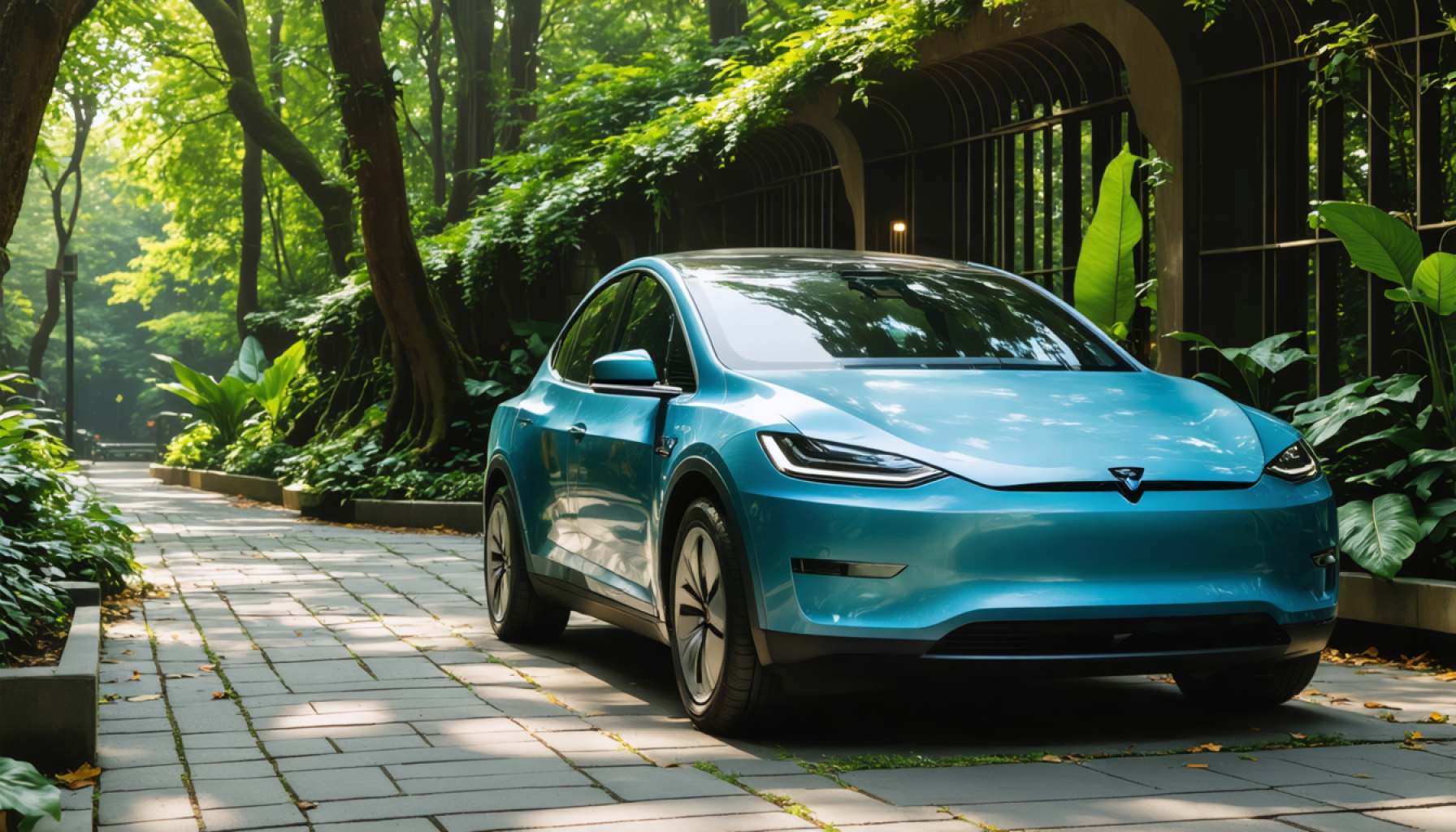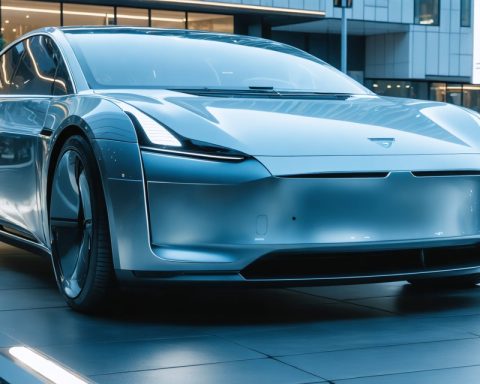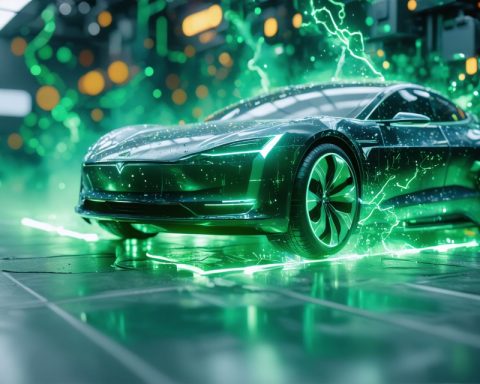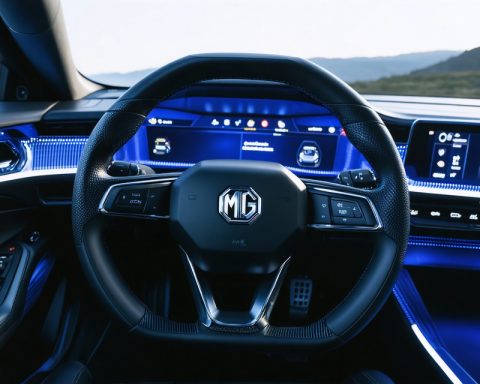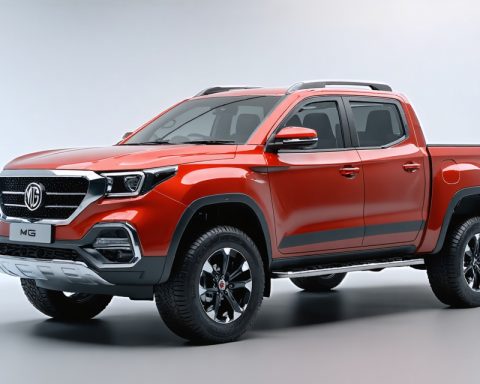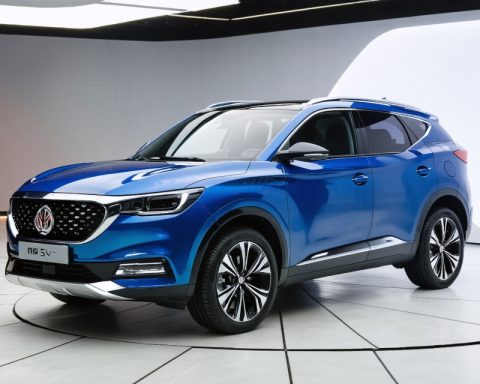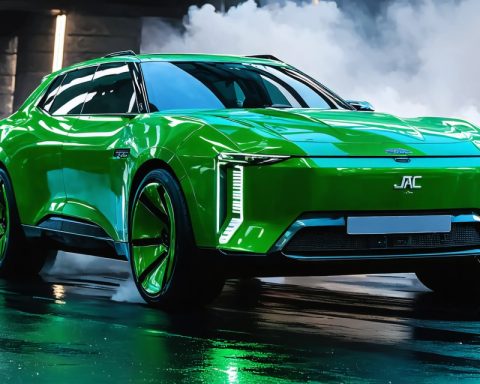- Electric vehicles (EVs) are transforming urban areas by reducing carbon emissions and improving air quality.
- The expansion of EV infrastructure, like charging stations, supports the development of green cityscapes and innovative energy solutions.
- EVs enhance connectivity, with charging stations doubling as Wi-Fi hotspots and encouraging urban integration.
- The EV industry contributes to economic growth through job creation in R&D and green technology sectors.
- Electric vehicles herald a sustainable future, reshaping cities into ecosystems where technology and environmental needs coexist.
The electric hum of a new era zips through our cities as electric vehicles (EVs) quietly transform the urban landscape. Picture your morning commute without the relentless barrage of honking and engine growls—only the gentle whirr of progress guiding you through bustling streets. In this electrifying narrative, EVs are far more than just eco-friendly alternatives; they are the silent architects reshaping our concrete jungles into greener, more sustainable spaces.
Urban Electrification
EVs charge beyond the conventional role of transportation. Imagine cities shrouded in smog, struggling under the weight of fossil-fuel emissions; then, envision those same streets revitalized with clean air as electric vehicles glide silently by. A single EV produces about half the carbon emissions of a traditional gasoline-powered car over its lifetime, including electricity generation. This significant reduction in emissions offers a fresh breath of air—literally—for urban areas suffocating under pollution.
Infrastructure Innovation
Electric cars demand a new kind of attention: the charging station, a growing icon of modernity. Cities worldwide are racing to integrate these sleek power hubs, fostering a robust network that not only supports EVs but also propels green infrastructure development. Imagine trees interwoven with solar panels, streetlights doubling as charging ports, and an environment where parking spaces are verdant ecosystems powered by renewable energy.
Community and Connectivity
Electric vehicles usher in unprecedented opportunities for urban connectivity. Manufacturing and tech companies collaborate to design seamless, integrated systems that link cars, homes, and the power grid. Scan your surroundings, and you’ll find EV charging points doubling as Wi-Fi hotspots, turning waiting time into productive moments. Additionally, cities are buzzing with community initiatives, offering electric car-sharing programs that encourage collective ownership and sustainable commuting choices.
Economic Evolution
Investing in electric vehicles spells a transformation beyond environmental benefits—it’s an economic renaissance. Picture cleaner skies pouring economic dividends back into the community: reduced healthcare costs due to improved air quality and an influx of green jobs in R&D, manufacturing, and infrastructure development. The electric vehicle industry stands poised to inject trillions into the global economy by creating a dynamic workforce attuned to the possibilities of the future.
The quiet revolution of EVs suggests a compelling narrative: they are not just reshaping our urban landscapes but fundamentally redefining how we live, breathe, and connect within them. Their silent hum is a clarion call for change, as visible in the air around us as it is in the economics beneath us. Electric vehicles invite us to reimagine cities as thriving ecosystems where innovation meets necessity, carving a path towards a sustainable future. Embrace this electrified leap forward, for it carries the promise of a world rejuvenated by the green pulse of progress.
Revolutionizing the Urban Jungle: Electric Vehicles Reshape Cities and Lifestyles
The Electric Vehicle Revolution: More Than Meets the Eye
The electrification of transport is redefining our urban environments. Electric vehicles (EVs) are revolutionizing more than mobility; they are changing our economic structures, environmental realities, and even cultural norms. As cities evolve, we witness a profound transformation that could careen us into a brighter, more sustainable future.
Exploring the Uncharted: Beyond Emissions Reductions
While the reduction of greenhouse gas emissions is a well-known advantage of EVs, let’s delve deeper into their multifaceted impacts:
Smart Grids and Energy Efficiency
EVs are pivotal in the broader adoption of smart grids. These grids transform traditional electrical systems into optimized networks where energy production, consumption, and storage coexist seamlessly. With vehicle-to-grid technology, EVs will become mobile energy units capable of storing and reselling electricity back to the grid during peak demands, potentially leading to more stable energy pricing and improved energy efficiency (Energy.gov).
Battery Lifecycle and Sustainability
The subject of battery disposal highlights a notable challenge. EV batteries use lithium, cobalt, and other rare earth elements, raising concerns about resource sustainability. Fortunately, significant strides are being made in battery recycling technologies to recover and reuse these materials. Companies like Redwood Materials are leading efforts in battery recycling, aiming to establish closed-loop systems that minimize waste and environmental impact.
Real-World Use Cases: Cities Leading the Charge
Leading metropolitan areas are leveraging EVs to reshape their infrastructure:
– Oslo, Norway: Known for its proactive stance on EV integration, Oslo has invested heavily in charging infrastructure and incentives, leading to impressive adoption rates (Norway consistently ranks as a top country for EV ownership per capita).
– Amsterdam, Netherlands: Extensive electric car-sharing programs and initiatives, such as the Electric Mobility as a Service (EMaaS), exemplify successful urban EV strategies.
Industry Trends and Market Forecasts
The EV market has experienced exponential growth and is expected to maintain this trajectory. According to Bloomberg NEF, EV sales are projected to reach 56 million by 2040, making up over 50% of total vehicle sales worldwide. This boom will spur advances in battery technology, infrastructure, and autonomous vehicle integration.
Overcoming Challenges: Controversies and Limitations
While promising, the EV sector faces notable hurdles:
– Range Anxiety: Despite enhancements, some consumers remain concerned about EV range limitations. Yet, brands like Tesla and Hyundai continually improve battery capacities, reducing these concerns.
– Charging Infrastructure: The uneven distribution of charging stations is another issue. Urban areas may thrive, but rural locations necessitate significant development efforts to ensure comprehensive coverage.
Actionable Tips for Embracing EVs
1. Explore Incentives: Governments worldwide offer incentives for EV purchases, reducing initial costs. Check local programs to maximize savings.
2. Evaluate Your Travel Needs: Consider your travel habits when choosing an EV, focusing on range and charging accessibility.
3. Investigate Charging Solutions: Integrate home charging stations to enhance convenience and energy efficiency.
4. Engage in Car-Sharing: Participate in electric car-sharing programs for flexible and eco-friendly mobility.
Conclusion: Welcome the Silence of Progress
Electric vehicles signal a radical shift in how we navigate our cities. They represent cleaner air, economic growth, and innovative technologies. By embracing EVs, we become active participants in an exhilarating revolution that promises a healthier, more sustainable future.
For further information on electric vehicle insights and forecasts, visit Bloomberg or U.S. Department of Energy.
